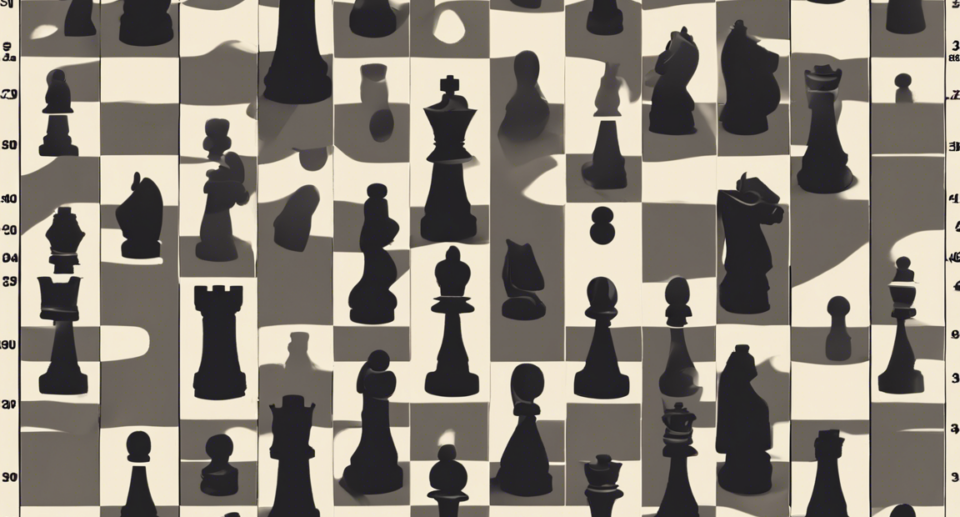Calculating the Total Number of Squares on a Chessboard

Have you ever wondered how many squares are there on a chessboard? This seemingly simple question actually involves a complex mathematical concept that is both intriguing and enlightening. In this post, we will delve into the world of chessboards and explore the method to calculate the total number of squares on a chessboard.
The Basics of a Chessboard
Before we get into the calculations, let’s understand the structure of a standard chessboard. A chessboard consists of 64 squares, arranged in an 8×8 grid. The squares alternate in color between dark and light, with each row and column being labeled with a letter and a number, respectively.
The Different Types of Squares on a Chessboard
When we talk about squares on a chessboard, we are not just referring to the individual small squares that make up the grid. There are different types of squares that we need to consider:
-
Unit Squares: These are the 64 individual small squares on the chessboard.
-
2×2 Squares: These are the 49 squares that can be formed by combining four unit squares.
-
3×3 Squares: These are the 36 squares that can be formed by combining nine unit squares.
-
4×4 Squares: These are the 25 squares that can be formed by combining sixteen unit squares.
Calculating the Total Number of Squares
To calculate the total number of squares on a chessboard, we need to add up the number of unit squares, 2×2 squares, 3×3 squares, and 4×4 squares. Let’s break it down:
-
Unit Squares: There are 64 unit squares on the chessboard.
-
2×2 Squares: There are 49 2×2 squares on the chessboard.
-
3×3 Squares: There are 36 3×3 squares on the chessboard.
-
4×4 Squares: There are 25 4×4 squares on the chessboard.
By adding these numbers together, we get:
64 (unit squares) + 49 (2×2 squares) + 36 (3×3 squares) + 25 (4×4 squares) = 174 squares
Therefore, there are a total of 174 squares on a standard 8×8 chessboard.
Frequently Asked Questions (FAQs)
Q1: Why do we need to calculate the total number of squares on a chessboard?
A1: Calculating the total number of squares on a chessboard is a fun mathematical exercise that helps in understanding patterns and relationships within a geometric structure.
Q2: Is there a formula to calculate the total number of squares on a chessboard?
A2: While there is no direct formula, we can calculate the number of squares by adding the individual unit squares, 2×2 squares, 3×3 squares, and 4×4 squares.
Q3: Can we generalize this method to calculate the number of squares on an NxN grid?
A3: Yes, the same method can be applied to calculate the total number of squares on any NxN grid by considering the unit squares, (N-1)x(N-1) squares, (N-2)x(N-2) squares, and so on.
Q4: Are there any other interesting patterns or properties related to squares on a chessboard?
A4: Yes, exploring the different types of squares on a chessboard can lead to fascinating discoveries related to symmetry, geometry, and mathematical principles.
Q5: How can understanding the number of squares on a chessboard be applied in real-life scenarios?
A5: While it may seem like a theoretical concept, the ability to analyze patterns and calculate squares can be beneficial in fields such as mathematics, computer science, and problem-solving.
Whether you are a chess enthusiast or a math aficionado, the calculation of the total number of squares on a chessboard offers a captivating journey into the world of numbers and patterns. Next time you come across a chessboard, take a moment to appreciate the intricate web of squares that make up this classic game board.



